Seaweeds of the South African South Coast


Order Fucales
Family Sargassaceae
Brassicophycus brassicaeformis (Kützing) Draisma, Ballesteros, F.Rousseau & T.Thibaut 2010: 1339, 1340
Plants yellowish-brown, comprising stands of uprights arising from mats of rhizomatous, intertwined holdfasts. Holdfast a spreading rhizome made up of terete to slightly flattened haptera ca. 2-3 mm in diameter coalescing to form mats up to several metres across. Numerous terete upright axes produced, ca. 3-4 mm in diameter and up to 50 cm long when mature, branching bilaterally and alternately and producing several branches on each side from distal part of upright. Branches become modified into swollen flattened receptacles that contain conceptacles. Constrictions at bases of older branches give impression that receptacles are stalked.
Plants dioecious, with unisexual conceptacles; each upright containing conceptacles of a single sex. Conceptacles in 2 rows along margins of flattened receptacles.
Collections, ecology and regional distribution
Recorded from Sea Point (Cape Town) on the west coast to Struisbaai (15-23). A single record from Algoa Bay is mentioned by (Stegenga et al. 1997), but this needs confirmation. This species dominates areas of rock in the lower eulittoral zone between Cape Agulhas and Cape Point. Holdfast perennial and probably long-lived, uprights produced and become fertile annually. Spread of populations is largely by growth of rhizomatous holdfasts.
World distribution: South African endemic.
Type locality: Cape of Good Hope (Silva et al. 1996).
Note: This entity was previously known as Bifurcaria brassicaeformis (Kützing) Barton, but the molecular study of Draisma et al. (2010) showed that it is sufficiently different from the type species of that genus to require generic recognition.

Brassicophycus brassicaeformis, Struisbaai, young thalli.
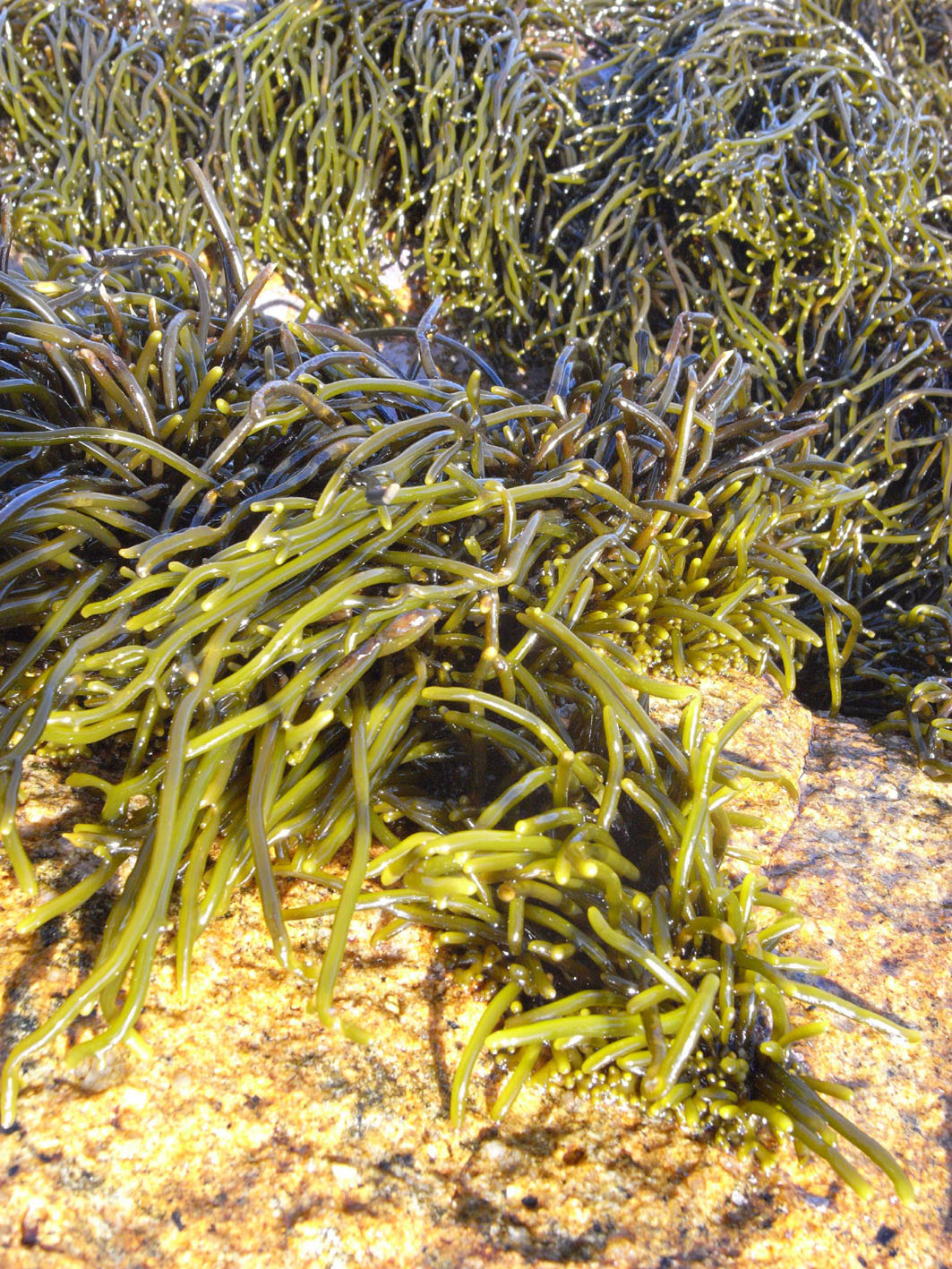
Brassicophycus brassicaeformis, typical intertidal thalli.
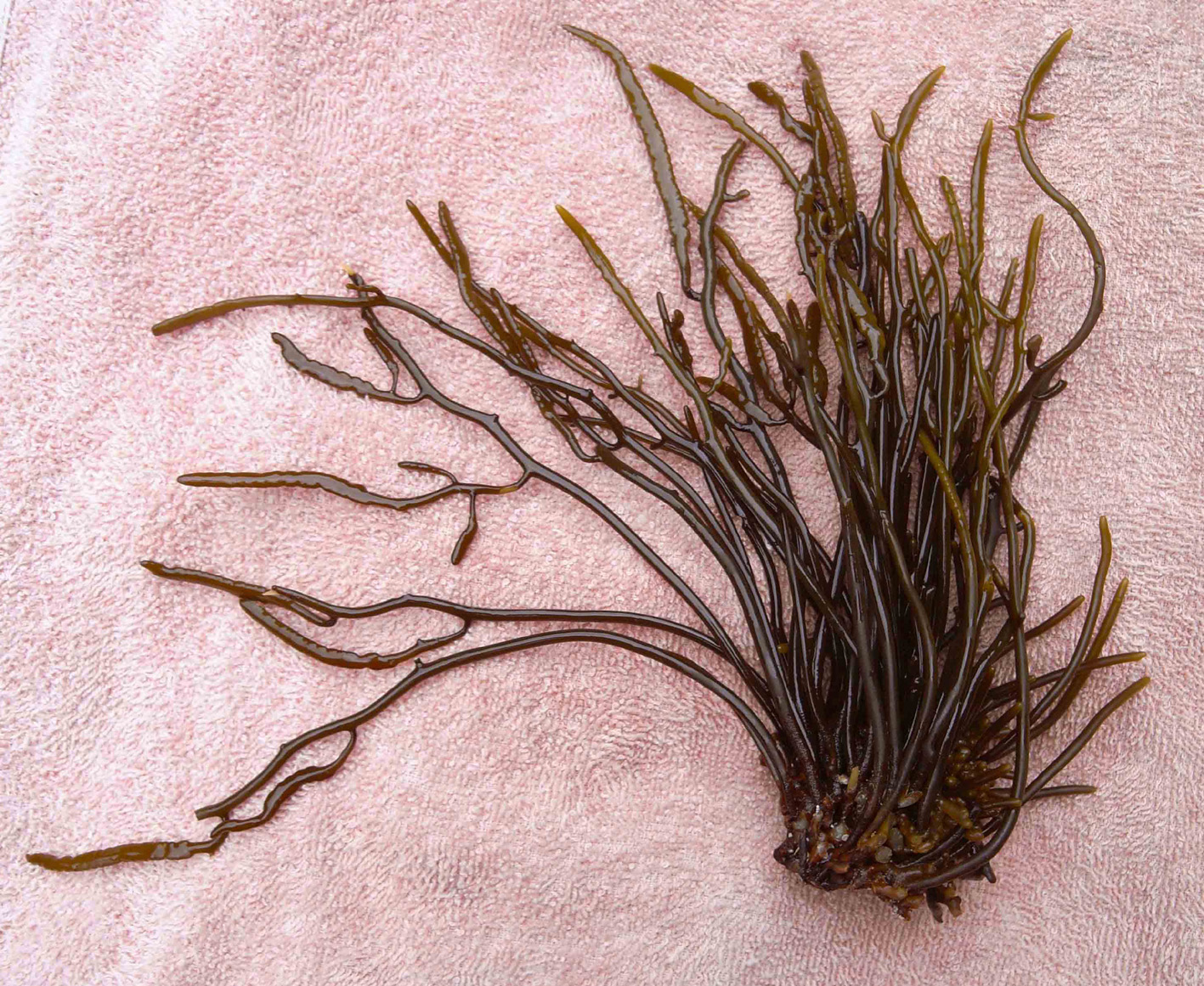
Brassicophycus brassicaeformis, thalli with fertile uprights.
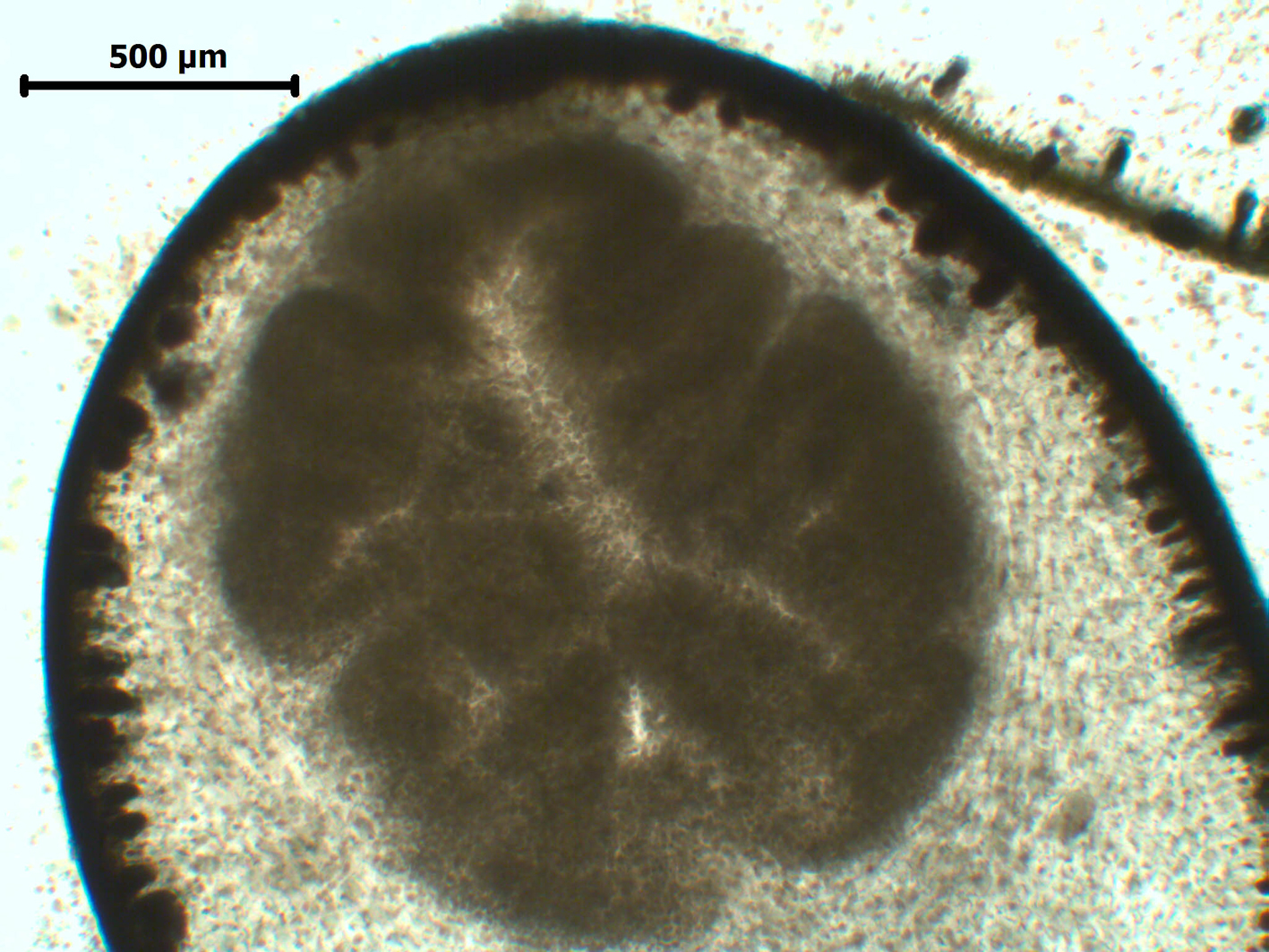
Brassicophycus brassicaeformis, XS showing conceptacle filled with antheridia.
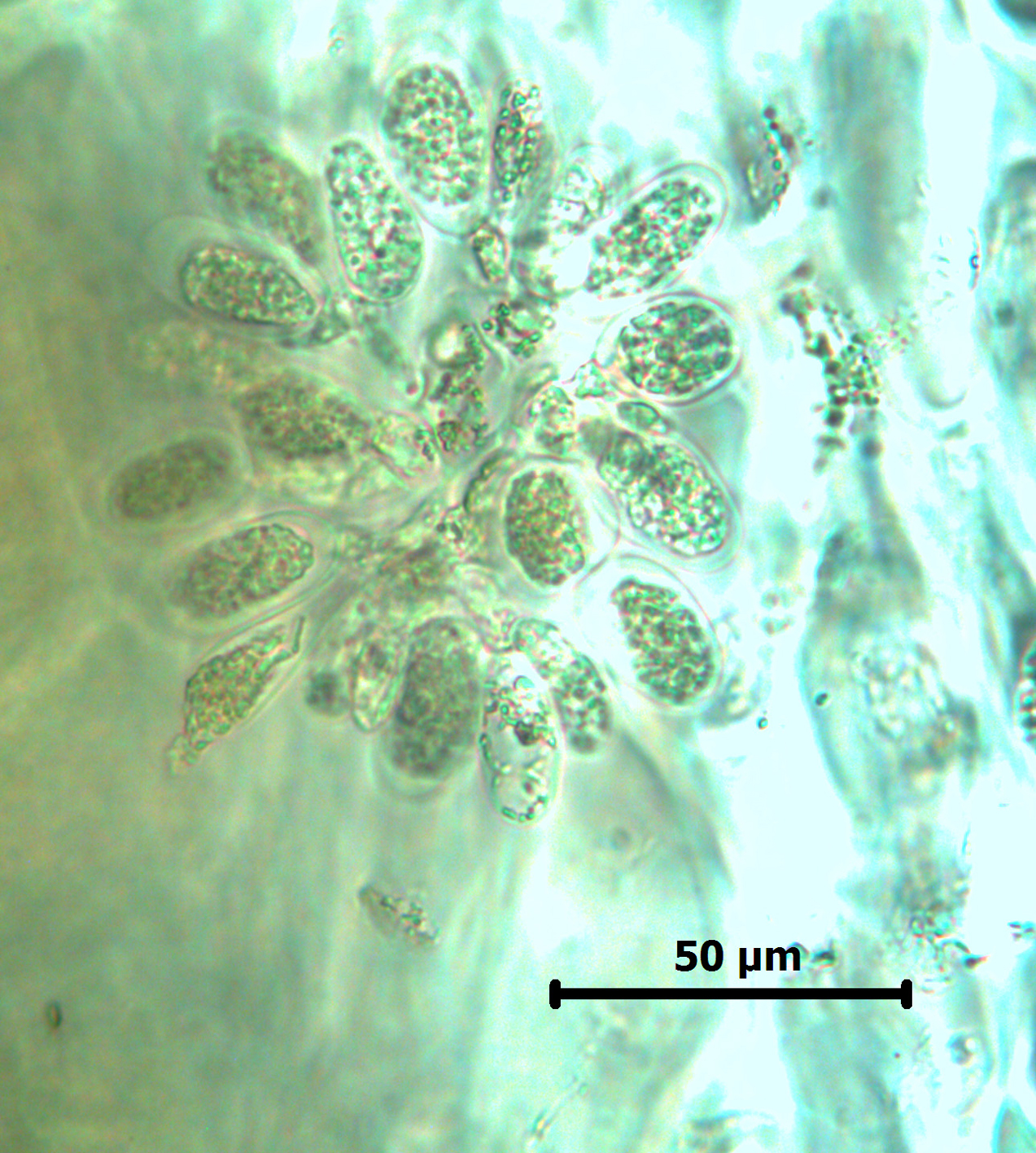
Brassicophycus brassicaeformis, XS showing cortex and outer medulla.
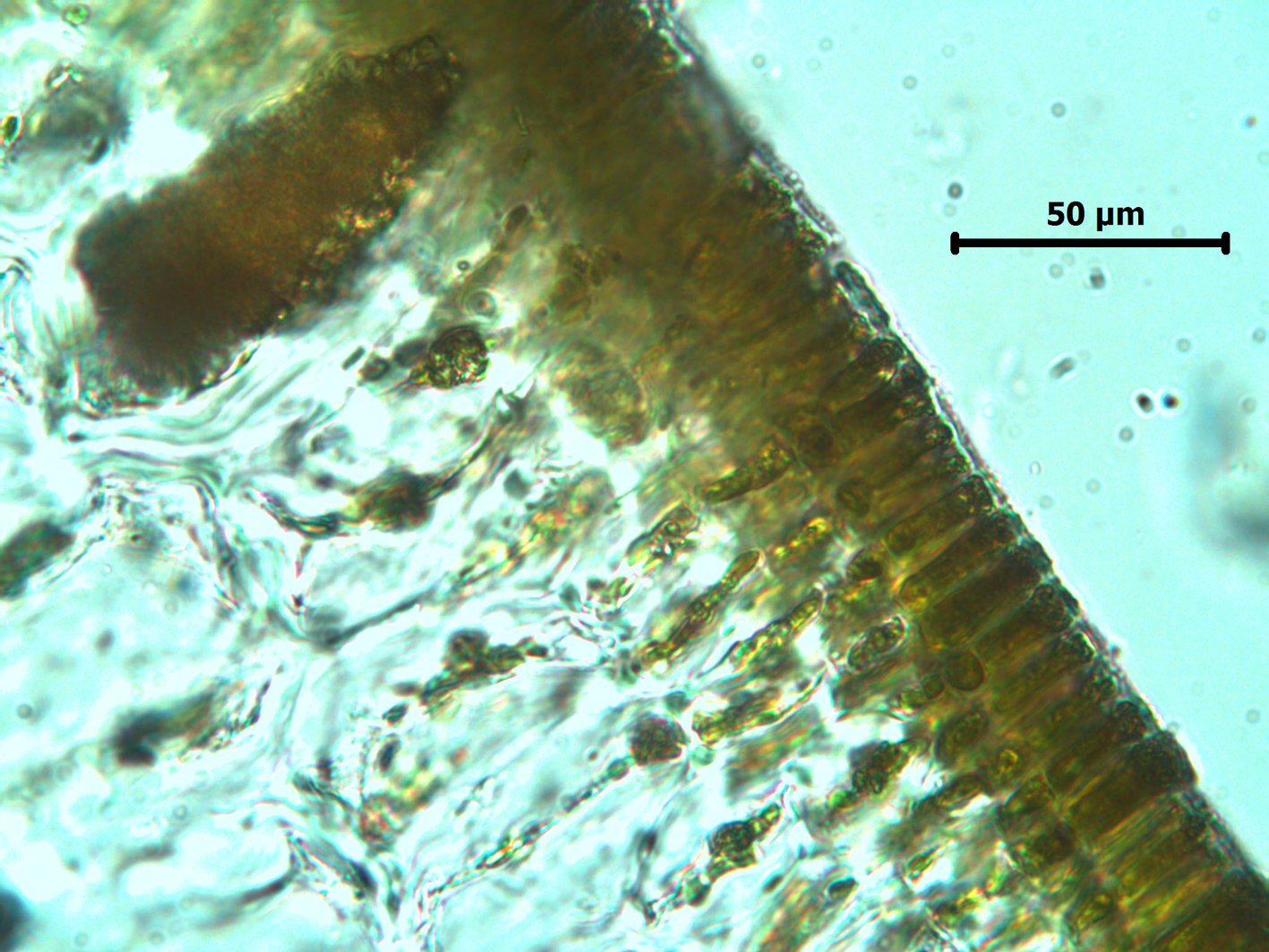
Brassicophycus brassicaeformis, detail of male reproductive structure.
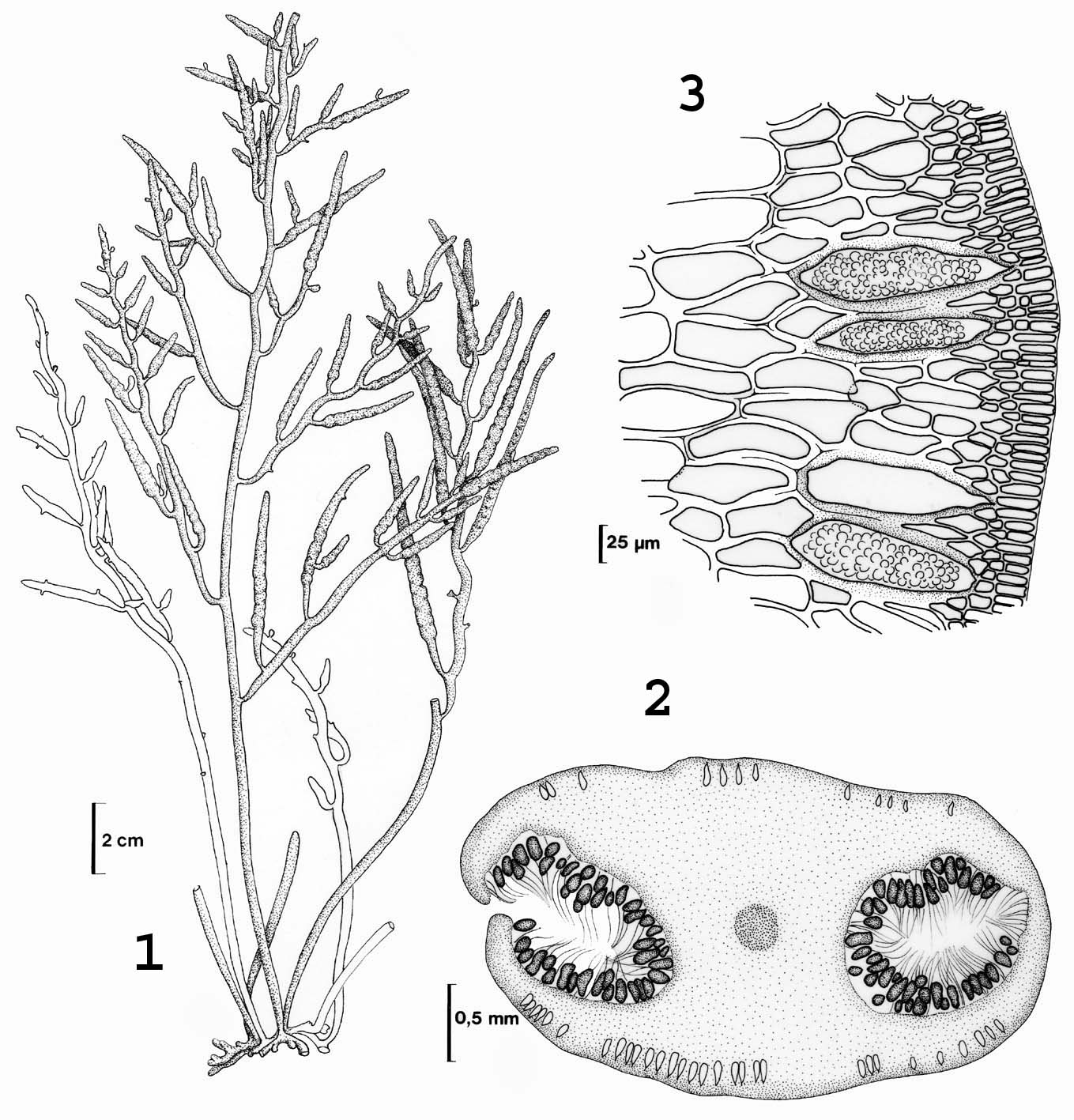
Brassicophycus brassicaeformis.1. Habit of fertile thallus. 2. Cross section of receptacle with female conceptacles. 3. Detail of cross section, with mucilage cells. Reproduced from Stegenga et al. (1997).
References Brassicophycus
Draisma, S.G.A., Ballesteros, E., Rousseau, F. & Thibaut, T. (2010). DNA sequence data demonstrate the polyphyly of the genus Cystoseira and other Sargassaceae genera (Phaeophyceae). Journal of Phycology 46(6): 1329-1345.
Silva, P.C., Basson, P.W. & Moe, R.L. (1996). Catalogue of the benthic marine algae of the Indian Ocean. University of California Publications in Botany 79: 1-1259.
Stegenga, H., Bolton, J.J. and R. J. Anderson. 1997. Seaweeds of the South African west coast. Contributions from the Bolus Herbarium 18: 655 pp.
Cite this record as:
Anderson RJ, Stegenga H, Bolton JJ. 2016. Seaweeds of the South African South Coast.
World Wide Web electronic publication, University of Cape Town, http://southafrseaweeds.uct.ac.za; Accessed on 18 December 2025.